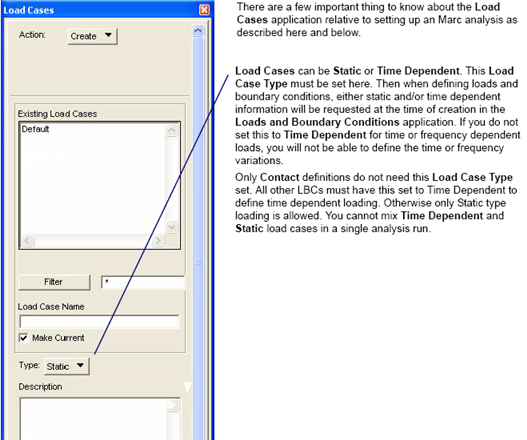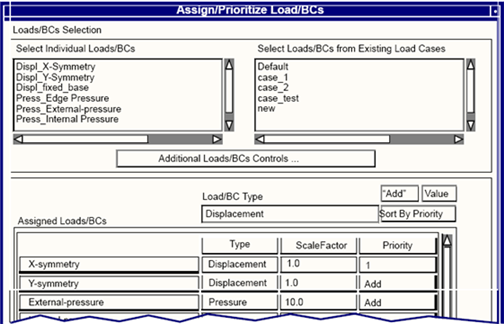XXXXXXXXXXXXXXXXXXXXXXXXXXXXXXXXXXXXXXXXXXXXXXXXXXXXXXXXXXXXXXXXXXXXXXXXXXXXXXXXXXXXXXXXXXXXXXXXXXXXXXXXXXXXXXXXXXXXXXXXXXXXXXXXXXXXXXXXXXXXXXXXXXXXXXXX''"> Load Cases
Load Cases in Patran are used to group loads, boundary conditions and contact definitions together. A load case is selected when preparing an analysis and is associated to a Load Step. See
Load Step Creation. The operation of the Load Cases application is described in
Load Cases Application (Ch. 1) in the Patran Reference Manual.
All loads and boundary conditions are placed into the active load case. You may change the active load case in the Loads and Boundary Conditions application directly on the main form before creating any loads or boundary conditions. If loads are placed in the wrong load case, you will have to enter this application and change their assignments.
The Load Cases application also has some usefulness with its ability to scale entire load cases and individual LBCs assigned to a load case. There are three ways to assign a scale factor to an LBC:
1. When defining the LBC itself in the Loads and BCs application. This affects the LBC itself.
2. When defining a load case, all LBCs associated to a load case can be scaled by this scale factor defined on the main form. This does not affect the LBCs at all. The LBCs are only scaled for this load case. Other load cases can have other scale factors.
3. Within an individual load case, a single LBC can be scaled. Again this does not affect the LBC itself, but is only done for the selected LBC in that load case only.
As an example of how this is useful, suppose you have an analysis where a rigid body pushes against another body in the x-direction for 1 second. In the next second it reverses directions for 1 second. This can be accomplished with one rigid body contact LBC defining the motion in the x-direction. Then two load cases are defined with exactly the same set of LBCs in them including the contact. In the second load case, the individual rigid body contact LBC can be scaled by zero (0) for position controlled or minus one (-1) for velocity controlled motion to simulate the reversal of the rigid body. This is convenient rather than defining a time varying field to define this simple motion. Each load case must then be associated to a Load Step. Load Steps are simply supersets of load cases. See
Load Step Creation.



